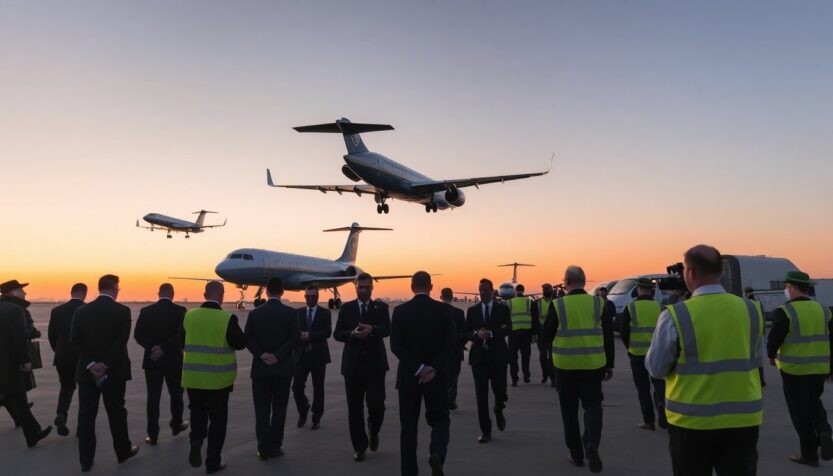In the early hours of a summer morning, six government jets flew through the clouds, converging on a secluded spot at a Turkish airport. Each aircraft carried human cargo from distant lands, creating an atmosphere thick with anticipation and tension. On the ground, protocol officers in black suits paced nervously, while men in fluorescent vests secured the perimeter of an airport that usually buzzes with activity but was now eerily quiet. A lone Turkish intelligence officer monitored the situation from the control tower, ensuring that each jet adhered to strict protocols before receiving clearance to land.
The High Stakes of Hostage Diplomacy
This operation was not an ordinary flight; it was part of an elaborate East-West prisoner exchange, far more intricate than Cold War negotiations. Each crew had to send a series of photos of the passengers on board before landing, all while keeping the operation discreet. The tension was palpable as the planes approached Turkish airspace, carrying stories of desperation and hope.
Among the passengers were a married couple, once deep-cover Russian spies, now unrecognizable after years in hiding. Their children sat quietly, unaware of the gravity of their situation. Can you imagine being a child and discovering your entire life is a cover? It sounds like a plot twist straight out of a movie, doesn’t it?
Another jet was tasked with bringing home a journalist detained for daring to cross into forbidden territory. His mind raced with thoughts of how he would greet the president. Meanwhile, a researcher who had played a dangerous game in the Arctic found himself ensnared in a web of international intrigue, while a plane from Washington carried men convicted of hacking—each a pawn in this complex game of diplomacy.
The Power Players Behind the Trade
As these jets prepared to land, the stakes were higher than ever. In the White House, national security advisor Jake Sullivan was glued to his phone, ready to react at a moment’s notice. President Biden, viewing this trade as a pivotal moment in his legacy, awaited updates anxiously. It is striking to think that the fate of so many people hinged on the actions of a few in this high-stakes political game.
Outside the Oval Office, families of the prisoners held their breath. Elizabeth Whelan had spent years advocating for her brother, while two teenage sisters shared their mother’s story on national stages, shining a light on their plight. Ordinary Americans transformed into crucial advocates in this shadowy world of negotiations. Who else believes that everyday individuals can have a monumental impact on global politics?
They were not alone. Billionaires, celebrities, and world leaders contributed to orchestrating this complex exchange, aptly nicknamed the “Rubik’s Cube” by diplomats. It is fascinating how interconnected our world is. From Hillary Clinton to the Saudi Crown Prince, all played a role in this intricate dance. However, despite their efforts, previous deals had often faltered. The stakes were high, and the clock was ticking.
The Mechanisms of a Shadow War
As the jets finally touched down, the carefully arranged choreography of the exchange began to unfold. Prisoners stepped onto the tarmac, their lives intertwined in a diplomatic dance years in the making. But behind the scenes, a much darker game was being played—one involving surveillance, threats, and the constant tug between two nations on the brink of conflict.
Amid this turmoil, reporters sought to piece together the story behind the headlines. How did the U.S. and Russia find themselves in this cycle of hostage diplomacy? What does it mean for those caught in the crossfire? Our investigation revealed a shadow war where the stakes were not just political but profoundly personal. Each prisoner was not merely a name on a list but a human being with hopes, dreams, and families waiting for their return.
As we delved deeper, the complexities of this trade became apparent, revealing a world where human lives were exchanged as if they were currency. It raises a crucial question: how far are we willing to go to secure our own safety? Are we prepared to embrace tactics that mirror those we detest? This narrative warrants discussion—what are your thoughts? Let’s engage in a conversation about it!

